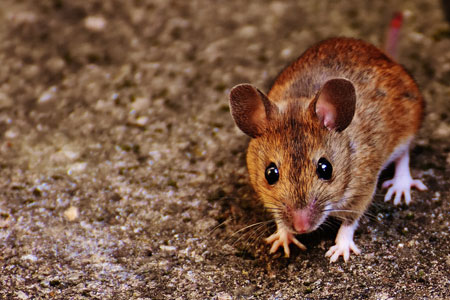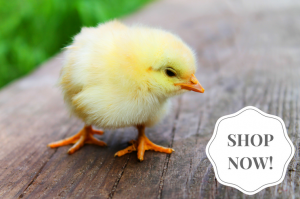
Mice in the chicken coop can potentially spread diseases and parasites to the flock. And they will increase the cost of keeping chickens by eating that expensive chicken feed.
One mouse can eat about one pound of chicken feed in one year. And think about this — mice reproduce fast!
Each female mouse weans 30 to 35 little mice per year. And those little ones are ready to mate by the time they are two months old. So you can imagine how fast chicken feed will disappear when mice get out of control in the chicken coop.
Poor Solutions
Poisoning rodents is not a great idea. The poison itself is dangerous to chickens, pets, wildlife, or children that might gain access to the bait. Some poisons pose a risk for a chicken or any other animal that subsequently eats a poisoned mouse. And poisoned rodents usually hide before they die, resulting in an unpleasant odor.
Traps can work, but are also a bit problematic. The cheaper traps require handling dead rodents, which is not a healthful plan for the person doing the handling. Further, unless you alter the conditions that attract mouse, new mice will replace the ones you remove by trapping. So trapping ends up being a never ending battle.
Mouse Deterrents
The most important way to keep mice away from the chicken coop, then, is to eliminate the attraction of feed. That endeavor starts the moment you bring chicken feed from the farm store.
Feed sacks are easy for a mouse to gnaw through. Remove feed from sacks and store it in a clean bucket or can with a tight-fitting lid. When filling storage containers, take care to avoid spills and immediately sweep up any that do happen.
If mice seek feed where chickens have access, they are more likely to eat at night, when chickens are asleep. During the day, chickens will chase and eat any mouse they can catch.
So if you feed your chickens outdoors, remove the feeders at night when the chickens are on the roost. Or fill outdoor feeders in the morning with only as much as your flock will consume before nightfall.
To discourage mice from visiting the feeder during the day, you might use hanging feeders that are difficult for them to reach. Or you could opt for treadle feeders, which mice are not hefty enough to operate.
Coop Patrol
If you feed your chickens inside the coop, mice will try to get in at night while the chickens sleep. They are nimble jumpers and climbers. And they can fit through the smallest holes or cracks. So examine your coop for holes, cracks, or other openings mice can sneak through.
Make sure the pophole and other doors close tightly at night. Secure vents and windows with ¼-inch hardware cloth (not chicken wire, which mice can easily climb through).
And don’t forget the floor. One of the favorite places for mice to hide is in tunnels underneath the chicken coop.
If your coop floor consists of packed dirt, line it with ¼-inch hardware cloth. Pay close attention to securing it tightly at the corners and edges where the floor and walls meet. Better yet is a properly poured concrete floor.
A coop with a wooden floor should be at least one foot above soil level. When mice don’t have protective hiding places underneath the coop, they are less likely to stick around. Discouraging mice from the chicken coop is a whole lot easier than battling them once they move in.
And that’s today’s news from the Cackle Coop.
Gail Damerow has written several books about keeping poultry, many of them available from the Cackle Bookstore. Image by Alexas-Fotos.

